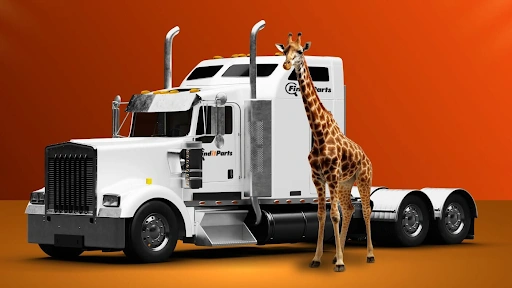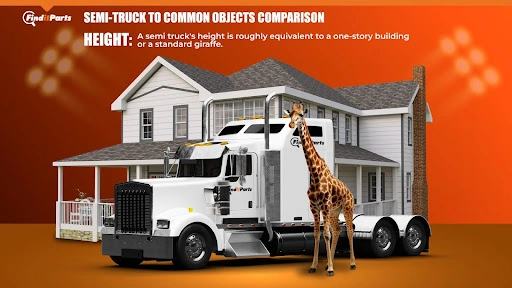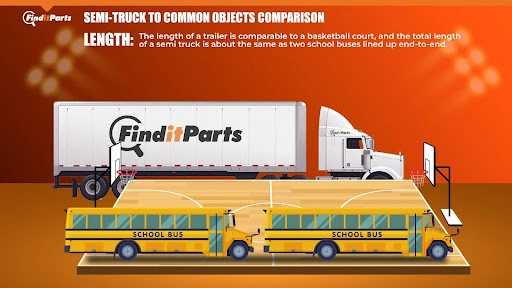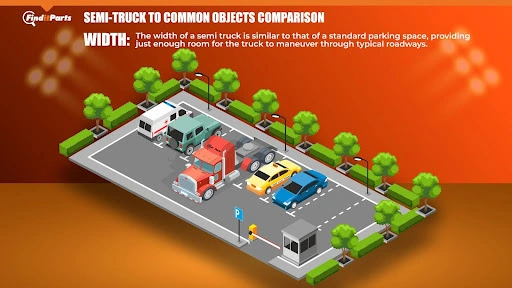Need help? We're here!
(888) 312-8812 Login SignupThe Complete Guide to Semi-Truck Dimensions
September 09, 2024

When it comes to semi-trucks, understanding their dimensions is crucial for various reasons, from ensuring compliance with regulations to planning logistics efficiently. Whether you're a truck driver, fleet manager, or simply curious about these massive vehicles, knowing the height, length, and width of semi trucks is essential. This guide provides a comprehensive overview of semi truck dimensions, helping you answer common questions like "how tall is a semi," "how long is a trailer," and "how wide is a semi."
Introduction to Semi Truck Dimensions
Semi trucks, also known as 18-wheelers, are a common sight on highways and play a pivotal role in the transportation industry. These trucks are designed to carry heavy loads over long distances, and their dimensions are standardized to ensure they can operate safely and efficiently on public roads. Understanding the dimensions of a semi-truck is important not only for drivers but also for logistics planners, warehouse managers, and anyone involved in the transportation sector.
Exploring the Height, Length, and Width of a Semi
How Tall is a Semi?
The height of a semi-truck can vary depending on the type of truck and its cargo. However, the average height of a semi-truck is around 13.5 to 14 feet. This measurement includes the truck's cab and the trailer. It's essential to know the height of your truck to avoid low-clearance obstacles such as bridges and tunnels.
How Long is a Trailer?
The length of a semi truck's trailer also varies, but the most common length is 53 feet. This standard length allows for optimal cargo space while adhering to road regulations. Some trailers may be shorter or longer, but 53 feet is the industry standard. When combined with the tractor (the front part of the truck), the total length of a semi-truck can be up to 70 to 80 feet.
How Wide is a Semi?
The width of a semi-truck is typically 8.5 feet (102 inches). This width includes the mirrors, making it important for drivers to be mindful of narrow roads and tight spaces. The standardized width ensures that semi trucks can safely share the road with other vehicles.
To put these dimensions into perspective, let's compare a semi-truck to common objects:
-
Height: A semi truck's height is roughly equivalent to a one-story building or a standard giraffe.
-
Length: The length of a trailer is comparable to a basketball court, and the total length of a semi-truck is about the same as two school buses lined up end-to-end.
Width: The width of a semi-truck is similar to that of a standard parking space, providing just enough room for the truck to maneuver through typical roadways.
Importance of Knowing Your Truck's Dimensions
Understanding the dimensions of a semi-truck is crucial for several reasons:
-
Safety: Knowing the height, length, and width helps in navigating underpasses, bridges, and tunnels, preventing accidents and damage to infrastructure.
-
Compliance: Regulations often specify maximum allowable dimensions for trucks. Adhering to these ensures compliance with the law and avoids fines.
-
Logistics: Efficient route planning requires precise knowledge of truck dimensions to optimize delivery schedules and avoid delays.
-
Parking and Loading: Accurate dimensions are essential for parking in designated truck stops and loading docks, ensuring smooth operations.
Conclusion
Understanding the dimensions of semi trucks is vital for safety, compliance, and logistical efficiency in the trucking industry. Whether you are a driver, fleet manager, or involved in transportation planning, this guide equips you with the essential knowledge needed to navigate the complexities of semi-truck dimensions. By knowing the height, length, and width of these vehicles, you can ensure safer travels, better route planning, and adherence to industry regulations.






